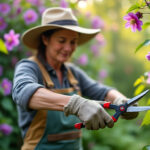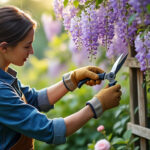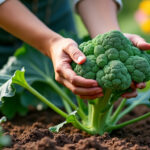Understanding how to properly prune grapevines is crucial for maximizing growth and ensuring a bountiful harvest. This comprehensive guide delves into the techniques, timings, and tools necessary for effective grapevine pruning. Whether a beginner or an experienced grower, adapting the methods discussed here will enhance the health and productivity of grapevines, leading to delicious fruit year after year.
- Understanding Grape Vine Anatomy
- Timing Your Pruning
- Essential Pruning Tools
- Pruning Techniques for Maximum Yield
- Common Pruning Mistakes to Avoid
- Post-Pruning Care and Maintenance
- Advanced Pruning Techniques
Understanding grape vine anatomy for effective pruning
A solid understanding of grapevine anatomy is essential for effective pruning. Each part of the grapevine plays a significant role in its growth and fruit production. Grapevines consist of the trunk, canes, buds, and cordons, each contributing to the overall structure and functionality of the vine. Recognizing these components will aid growers in making better pruning decisions.
Key Parts of a Grape Vine
| Part | Description |
|---|---|
| Trunk | The main support structure that elevates the vine. |
| Cordons | Horizontal branches from the trunk that yield fruiting canes. |
| Canes | Last season’s growth from which buds emerge. |
| Buds | Future leaves and fruit clusters that grow from canes. |
Understanding these parts enables growers to make informed pruning choices. For instance, the trunk supports the vine, while canes are crucial for fruit production. The dynamic between these various components illustrates how effective pruning can promote sufficient leaf growth for photosynthesis while encouraging fruitful canes to flourish.
In summary, familiarity with grapevine anatomy forms the foundation of successful pruning practices. By realizing the function of each part, vine caretakers can enhance their pruning effectiveness and, ultimately, their harvest quality.
Timing your pruning for optimal vine health
Timing is a critical factor in grapevine pruning. Pruning too early or too late can impact vine health and productivity significantly. Grapevines generally undergo dormancy during the winter months. This period is crucial for pruning. Different grape varieties may require specific timing adjustments, but the common window for pruning typically lies between late winter and early spring when winter frost has passed.
Best Times for Pruning Different Varieties
- 🍇 Early bloomers (e.g., Chardonnay) need pruning before late bloomers (e.g., Cabernet Sauvignon).
- 🌡️ Check for winter damage prior to pruning.
- 📅 Monitor local climate to determine the best time for your specific region.
During the dormant season, grapevines conserve energy, allowing for regeneration after pruning. Pruning in this phase minimizes stress and encourages new growth as the vines begin to awaken with the arrival of spring. Moreover, it fosters healthy sprouting of buds and better air circulation, contributing to enhanced fruit yield.
Proper timing can even vary based on the grower’s geographical location. Warmer climates may require earlier pruning, while cooler climates extend the timeline due to frost risks. Therefore, understanding local climate conditions contributes significantly to effective vine management.
Essential pruning tools for grapevines
Using the right tools is essential for efficient grapevine pruning. Quality tools promote clean cuts, which minimize injury to the plant and reduce the risk of disease. Each tool serves a specific purpose, making it crucial for vine caretakers to choose appropriately based on the task at hand.
Key Pruning Tools
| Tool | Function |
|---|---|
| 🍂 Hand Pruners | Perfect for precise cuts on smaller branches. |
| ✂️ Loppers | Ideal for larger branches, giving extra leverage. |
| 🪚 Saws | Necessary for cutting through thicker wood. |
Maintenance of pruning tools is equally important. Clean tools after each use to eliminate sap buildup, and regularly sharpen blades to maintain cutting efficiency. Storing tools in a dry, safe location will prevent rust and damage. Investing in quality tools will ultimately lead to a smoother pruning process and healthier grapevines.
When to plant wisteria for optimal growth
Pruning techniques for maximizing yield
Two primary techniques dominate grapevine pruning: spur pruning and cane pruning. Each method offers unique benefits that can significantly impact vine health and fruit yield. Knowing when to use which technique is vital for any grape grower.
Spur pruning involves cutting back old growth to encourage new shoots, generally keeping spurs one to three nodes long. This form of pruning effectively controls the vine’s energy, leading to increased fruit production. By limiting the number of buds on each spur, growers can promote healthy growth and better-quality fruit.
On the other hand, cane pruning retains longer canes, providing more growth potential. This technique increases the number of buds per vine, enhancing overall fruit yield and quality. Longer canes allow for improved sunlight access, fostering better photosynthesis and potentially larger fruit clusters.
Comparison of Spur vs. Cane Pruning
| Aspect | Spur Pruning | Cane Pruning |
|---|---|---|
| 💡 Technique | Short spurs (1-3 nodes) | Longer canes (generally 6-8 buds) |
| 🌱 Growth Control | Promotes controlled energy use | Encourages robust fruiting |
| 🍇 Yield Potential | Moderate yield | Higher yield potential |
Choosing the right pruning method can substantially affect the quality and quantity of the grape harvest. Understanding the dynamics between spur and cane pruning allows growers to adjust their practices to meet specific varietal needs and desired outcomes, thereby maximizing vineyard potential.
Common pruning mistakes to avoid
Understanding common mistakes associated with grapevine pruning can significantly enhance overall productivity. Many growers face challenges related to either excessive or insufficient pruning, potentially leading to long-term ramifications for vine health and fruit yield.
Common Pruning Mistakes
- ✂️ Over-pruning: Removing too much wood can stress the vine, reducing fruit production.
- ❌ Under-pruning: Failing to prune adequately leads to overcrowding, poor air circulation, and smaller fruit.
- 🔍 Misidentifying fruitful wood: Cutting the wrong parts of the vine results in diminished yields and wasted efforts.
A proper understanding of the necessary adjustments for different grapevine varieties is vital. For instance, monitoring the health and growth of each specific vine before making cuts allows for a more balanced approach. Knowing how many buds are optimal for different types of vines can lead to improved overall grape health and a fortified harvest.
Post-pruning care and maintenance
Post-pruning care is a critical aspect of grapevine management. Following proper pruning techniques, growers must monitor the health of their vines and support new growth for optimal results. Effective post-pruning care encourages strong recovery and prepares vines for robust growing seasons ahead.
Key Post-Pruning Tasks
- 👀 Monitoring Vine Health: Regularly inspect for any signs of disease or stress.
- 🌱 Supporting New Growth: Utilize training systems like trellises to help new shoots grow effectively.
- ☀️ Encouraging Sunlight Access: Position shoots for maximum exposure to light and air circulation.
Conducting health checks after pruning allows growers to detect potential issues early and make necessary adjustments. Maintaining good air circulation among the shoots and positioning them adequately can significantly impact overall growth. Successful management in this phase leads to stronger vines and, ultimately, more fruitful harvests.
Advanced pruning techniques for enhanced productivity
For those looking to boost both grape yield and quality, exploring advanced pruning techniques can make a notable difference. Double pruning and cluster thinning are two approaches that stand out for their effectiveness in improving overall harvest results.
Double pruning involves an initial cut that leaves longer canes for protection against frost. A subsequent cut reduces the number of buds available, resulting in better distribution of vine energy and increased grape size during ripening. This dual approach provides robust protection to vines while maximizing fruit quality.
Cluster thinning, another advanced technique, requires the careful selection and removal of some fruit clusters. By allowing the vine to focus its energy on fewer clusters, growers enhance the overall quality of remaining grapes. This method provides better ripening conditions and significantly enhances the flavor and sweetness of the resulting wine.
Comparison of Advanced Techniques
| Technique | Benefit |
|---|---|
| ✨ Double Pruning | Enhances frost protection and improves fruit size. |
| 🍷 Cluster Thinning | Focuses vine energy on fewer clusters for superior quality. |
Exploring these advanced techniques can transform the grape-growing experience, leading to exceptional harvests each season. A deeper understanding of vine care will undeniably cultivate a flourishing vineyard, showcasing the commitment of growers to produce high-quality grapes.
FAQ
What is the significance of pruning grapevines?
Pruning grapevines is vital for managing growth, allowing sufficient sunlight and air to reach the plants, thus promoting healthy fruit production.
When is the best time to prune grapevines?
The optimal time for pruning is during the dormant season from late winter to early spring, depending on local climate conditions.
What tools are essential for effective grapevine pruning?
Primary tools include hand pruners, loppers, and saws, each designed for specific tasks in the pruning process.
What are spur pruning and cane pruning?
Spur pruning cuts back old growth to short spurs, while cane pruning maintains longer canes to enhance fruit production.
How can pruning techniques affect grape quality?
Effective pruning techniques, such as cluster thinning, improve grape quality by allowing the vine to focus on fewer, high-quality fruit, leading to better overall harvests.
















